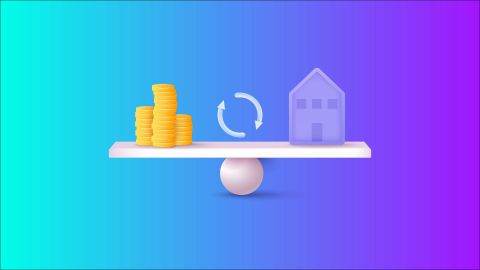Building tax, also known as property tax or house tax, is a levy imposed by local governments on property owners. The tax is primarily designed to generate revenue for financing public services, infrastructure development, and maintaining civic amenities within a particular locality. The revenue generated from building tax is crucial for the sustenance and improvement of local infrastructure and services such as sanitation, street lighting, road maintenance, and other municipal services.
Calculation of building tax
The calculation and collection of building tax can vary across regions and countries, but the fundamental concept remains the same. Property owners are required to pay a certain amount to the local municipality or governing body based on the assessed value of their property. The assessed value considers factors such as the property type (residential, commercial, industrial), size, location, and usage. However, there are common factors considered in the assessment of property taxes:
1. Property type and usage:
- Residential properties are often taxed differently from commercial or industrial properties.
- The usage of the property, such as whether it is self-occupied or rented out, may influence the tax rate.
2. Property size and area:
- The built-up area, carpet area, or the total area of the property may be considered in determining the tax amount.
3. Location:
- Properties situated in prime or commercial areas may attract higher taxes compared to those in residential or suburban zones.
4.Property age and condition:
- Older properties or those in dilapidated conditions may be subjected to different tax rates or exemptions.
5. Capital value-based assessment:
- Some municipalities assess taxes based on the capital value of the property, taking into consideration the market value and other factors.
6. Government guidelines:
- Municipal bodies often follow guidelines set by the state government for property tax calculations.
Payment of building tax
Property owners are usually required to pay building tax annually or semi-annually, depending on the local regulations. The payment can be made through online portals, designated banks, or municipal offices. Non-payment or delayed payment may result in penalties, interest, or even legal action by the local authorities.
The process of paying building tax involves several steps, and it can vary based on the local regulations and practices. Here is a general overview of how the payment of building tax typically works:
1. Assessment of property:
- Local authorities assess properties to determine the building tax amount. This assessment considers factors such as property type (residential, commercial, industrial), size, location, and usage. The methods of assessment may vary, and some municipalities use the market value of the property, while others consider factors like built-up area or annual rental value.
2. Calculation of building tax:
- Once the property is assessed, the local authorities calculate the building tax based on the established criteria. This can involve applying a predetermined tax rate to the assessed value of the property.
3. Issuance of tax bill:
- Property owners receive a tax bill or notice from the local municipal body specifying the amount due, the due date, and the payment instructions. The bill may also include details of any exemptions or rebates applicable.
4. Payment options:
Property owners can choose from various payment options, depending on the facilities provided by the local authorities. Common payment methods include:
- Online payments: Many municipalities offer online payment facilities through their official websites. Property owners can pay building tax using credit/debit cards, net banking, or other online payment systems.
- Bank payments: Some local governments designate specific banks where property owners can pay their building tax. Payments can be made in person at the bank or through designated branches.
- Municipal office: Property owners can visit the local municipal office to make the payment in person. Municipal offices often have dedicated counters or offices for tax-related transactions.
5. Due date and penalties:
- Building tax is typically due on an annual or semi-annual basis. Property owners are expected to pay the tax before the specified due date to avoid penalties or interest charges. Late payments may result in additional fees being levied.
6. Receipt and acknowledgement:
- After making the payment, property owners should receive a receipt or acknowledgement confirming the payment of building tax. This document serves as proof of payment and is essential for record-keeping purposes.
Exemptions and rebates
Certain categories of property owners may be eligible for exemptions or rebates on building tax. Common exemptions include:
- Low-Income Groups: Some municipalities provide tax relief for properties owned by individuals falling below a specified income threshold.
- Charitable or educational institutions: Buildings used for charitable or educational purposes may receive exemptions or reduced tax rates.
- Senior citizens and disabled individuals: Special concessions may be provided to senior citizens or persons with disabilities.
Challenges and concerns
While building tax is essential for local development, there are challenges and concerns associated with its implementation. These may include:
- Inconsistent assessment: Inconsistencies in property assessment methods and criteria across municipalities can lead to disparities in tax amounts.
- Tax evasion: Some property owners may attempt to evade taxes, leading to revenue losses for local bodies.
- Lack of transparency: The lack of transparency in the assessment process and the utilisation of tax revenues can erode public trust.
Building tax in India serves as a vital revenue stream for local governments, ensuring the provision of essential services and infrastructure. Understanding the factors influencing tax calculations, payment processes, and available exemptions is crucial for property owners to fulfil their civic responsibilities. It's also essential to stay informed about current building loan rates, as they can impact property investments and tax liabilities. Striking a balance between fair taxation and efficient utilization of funds is imperative for the sustained growth and development of urban areas across the country.




